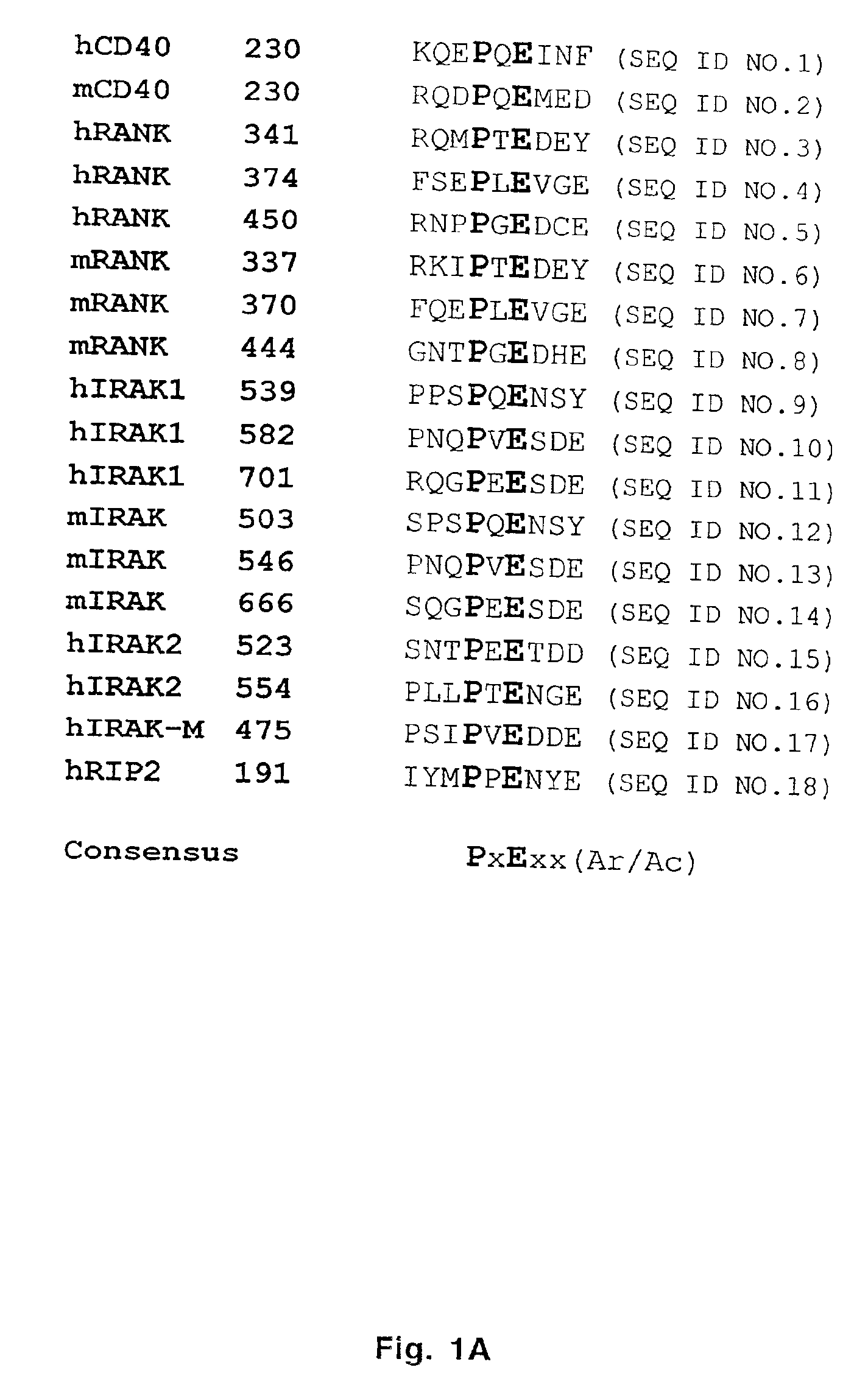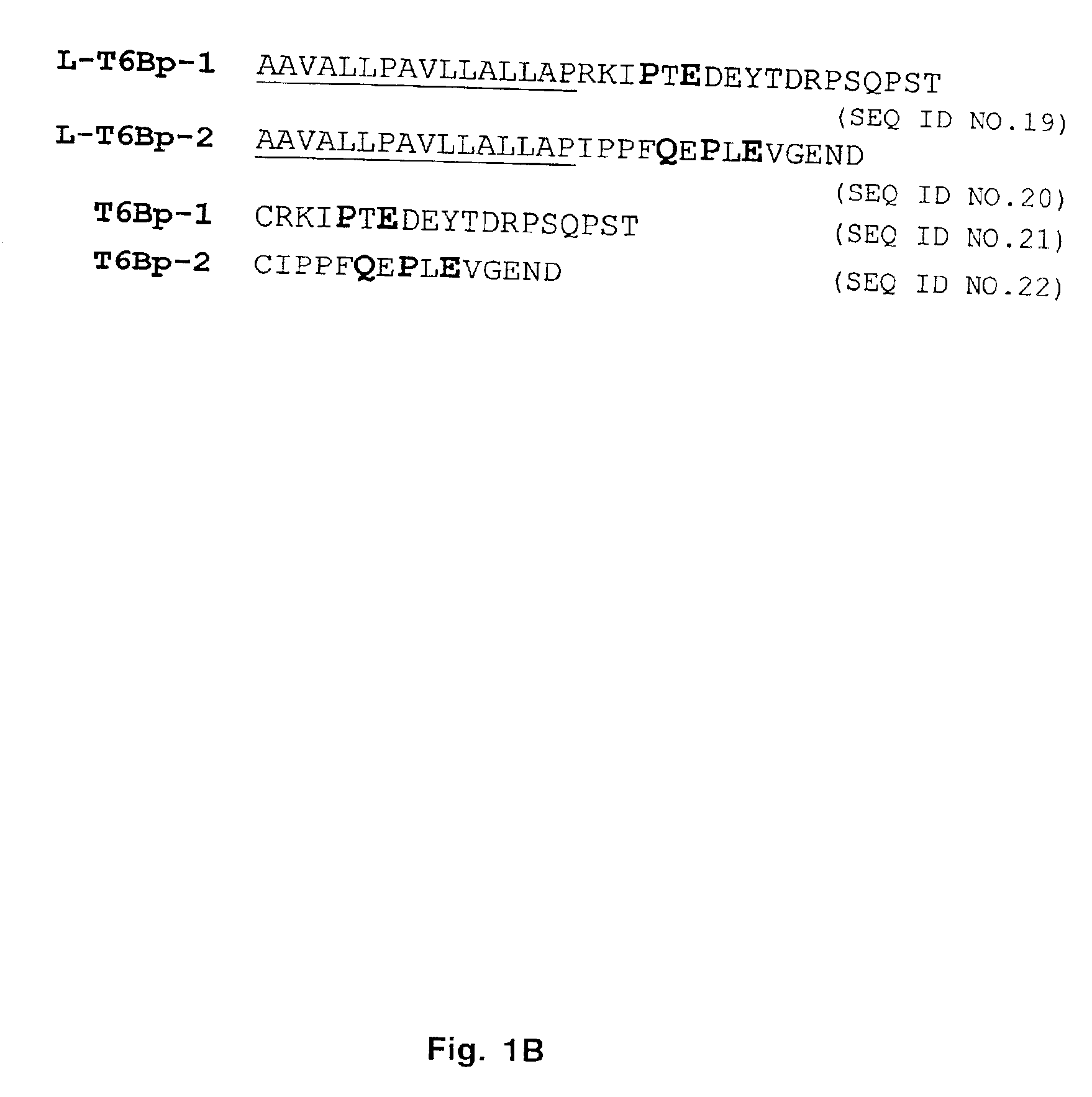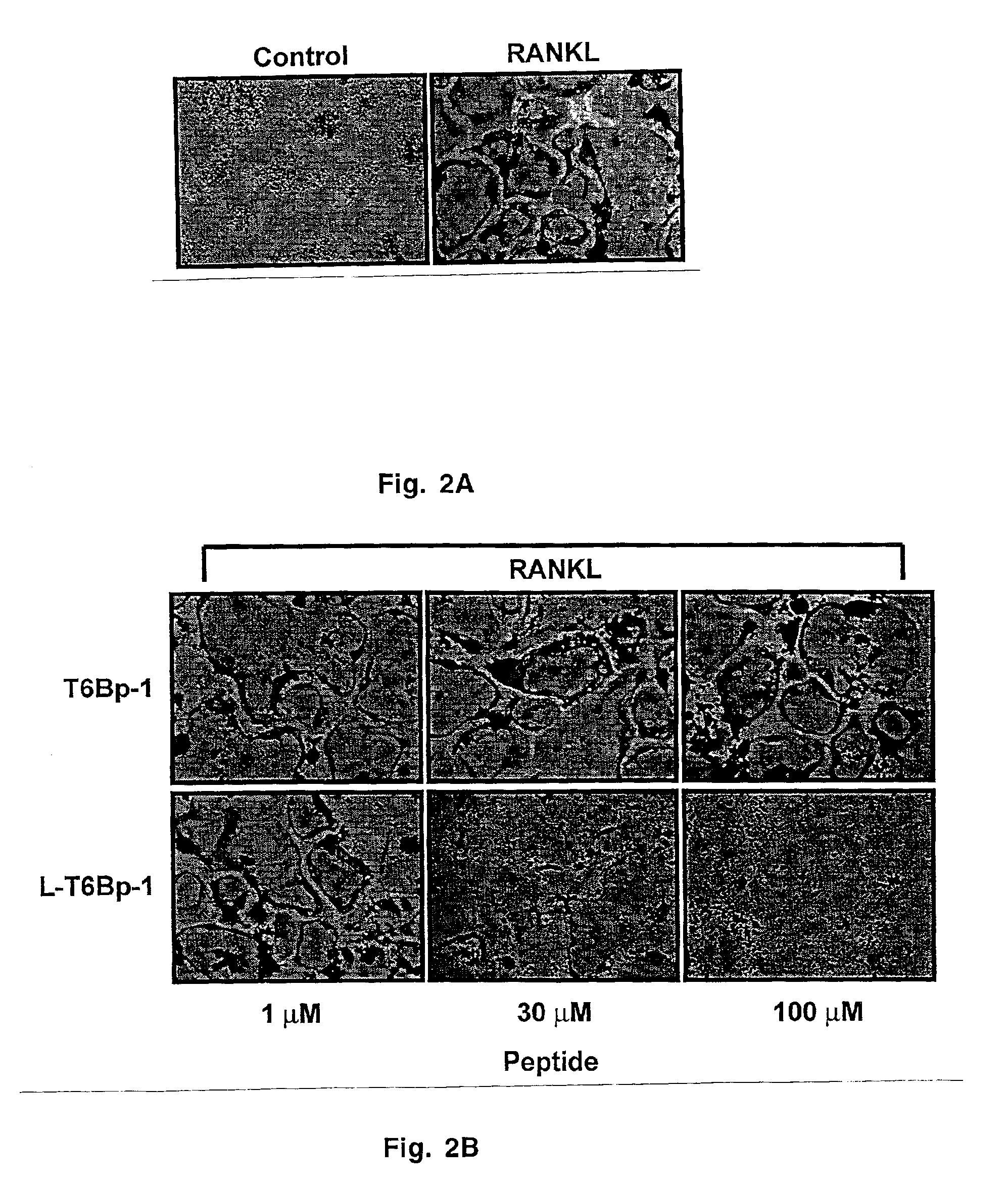Inhibitors of receptor activator of NF-κB and uses thereof
a receptor activator and inhibitor technology, applied in the field of cytokine biology and bone diseases, can solve the problems of bone loss, deficiency in prior art methods of disrupting, and cells with defects in bone resorption
- Summary
- Abstract
- Description
- Claims
- Application Information
AI Technical Summary
Benefits of technology
Problems solved by technology
Method used
Image
Examples
example 1
Reagents, Cell Lines, and Antibodies
[0056]The human embryonic kidney 293 cell line and the mouse macrophage cell line RAW264.7 were obtained from the American Type Culture Collection (Rockville, Md.). The 293 cells were cultured in MEM supplemented with 10% fetal bovine serum and antibiotics. RAW264.7 cells were cultured in DMEM-F12 supplemented with 10% fetal bovine serum and antibiotics. Monoclonal antibodies to phospho-ERK, p38, and JNK were purchased from New England Biolabs. Goat anti-rabbit IgG-conjugated horseradish peroxidase was purchased from BioRad Laboratories (Hercules, Calif.). Anti-JNK1 and anti-IκB were purchased from Santa Cruz Biotechnology (Santa Cruz, Calif.). Goat anti-mouse IgG-conjugated horseradish peroxidase was purchased from Transduction Laboratories (Lexington, Ky.). Protein A / G Sepharose beads was purchased from Pierce (Rockford, Ill.), and anti-FLAG was purchased from Sigma (St. Louis, Mo.). Staining for tartrate resistance acid phosphatase (TRAP) posit...
example 2
Expression Plasmids
[0057]Expression plasmids encoding mouse FLAG-tagged TRAF5 and TRAF6 (31) were provided by H. Nakano (Juntendo University, Tokyo, Japan) and FLAG-tagged TRAF2 was provided by J. Ni (Human Genome Sciences, Inc.). Expression vectors and purification of GST-fusion proteins for GST, GST-receptor activator of NF-κB cytoplasmic domain, and GST-Jun (1-79) have been previously described (7, 8). The expression vector of full-length murine RANKL (also known as TNF-related activation-induced cytokine (TRANCE) (pcDNA3.1-TRANCE) was provided by Y. Choi (Rockefeller University, New York, N.Y.).
[0058]To generate a bacterial expression vector for RANKL, specific 5′ and 3′ primers with HindIII and NotI sites, respectively, were used to amplify the DNA which encodes residues 157-316 of RANKL from the pcDNA3-TRANCE template. The PCR product was digested with HindIII / NotI and ligated in-frame with a HA-tag (N-terminal) and a histidine tag (C-terminal) into the expression vector pHB6 ...
example 3
Transient Transfections and Western Blotting
[0059]293 cells were plated at 0.6×106 cells / well on 6-well plates and transfected the next day as described (8). Total amount of plasmid DNA was kept constant by adding empty pCMVFLAG1 vector. Cells and the conditioned supernatants were harvested 24-36 h after transfection. Lysates were prepared as described (8). For western blot analysis, whole-cell lysates (15-30 μg) or proteins from GST-affinity precipitation were separated by 8.5% SDS-PAGE, electroblotted onto nitrocellulose membranes, and incubated with the indicated antibodies. The membranes were then developed using the enhanced chemiluminescence (ECL) system (Amersham, Chicago, Ill.).
PUM
| Property | Measurement | Unit |
|---|---|---|
| pH | aaaaa | aaaaa |
| pH | aaaaa | aaaaa |
| pharmaceutical composition | aaaaa | aaaaa |
Abstract
Description
Claims
Application Information
 Login to View More
Login to View More - R&D
- Intellectual Property
- Life Sciences
- Materials
- Tech Scout
- Unparalleled Data Quality
- Higher Quality Content
- 60% Fewer Hallucinations
Browse by: Latest US Patents, China's latest patents, Technical Efficacy Thesaurus, Application Domain, Technology Topic, Popular Technical Reports.
© 2025 PatSnap. All rights reserved.Legal|Privacy policy|Modern Slavery Act Transparency Statement|Sitemap|About US| Contact US: help@patsnap.com



